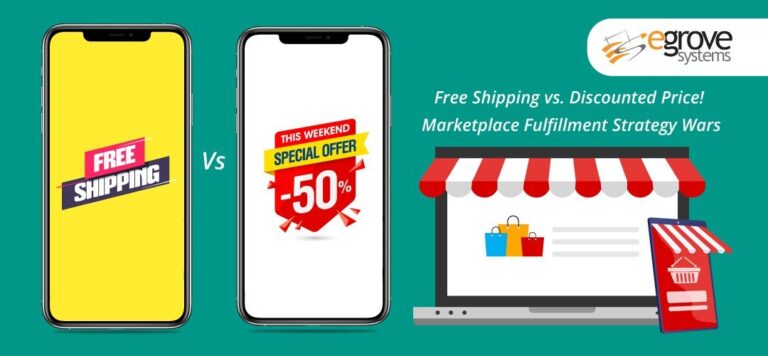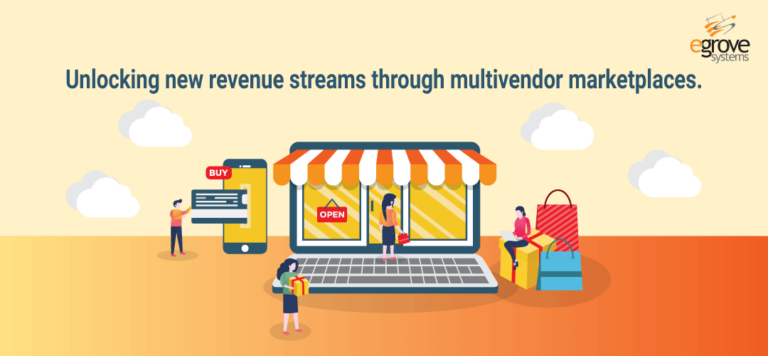Building an online multi-vendor marketplace is a fantastic and profitable business concept for ambitious entrepreneurs seeking entrepreneurial success in the e-commerce sector. If you don’t generate anything exceptional or unique, ideas are much more valuable.
Amazon, eBay, and Alibaba’s tremendous success have not gone ignored. According to the internet retailer’s study, sales in these multi-vendor marketplaces accounted for 52% of total worldwide online retail sales in 2018.
Building a multi-vendor market is an unavoidable challenge. Furthermore, as technology has advanced, having a one-stop “multi-vendor marketplace” has become one of the finest possibilities for beginning a business and addressing consumer demands.
Let’s examine the significance of procedures for creating a multi-vendor marketplace in more detail.
Multiple-provider marketplaces:
An online storefront where several merchants offer their goods is known as a multi-vendor marketplace. Here, numerous sellers can display the same goods that other sellers are offering, fostering healthy competition among sellers.
Do you believe that it is now more common for consumers to purchase and sell goods online due to the accessibility of these markets?
It’s undoubtedly popular because of the success of online markets like eBay, Amazon, and Quikr. Only the introduction of one-stop online stores will make it simpler for people to shop and merchants to sell their goods.
These markets come in several varieties. Some market models you may get online are briefly described below:
(B2B) – A market where goods and services are solely exchanged between companies.
For instance, Trade India and Alibaba
In the Business-to-consumer (B2C) market clients and vendors trade goods and services. They concentrate mostly on selling goods for individual use. For instance, Starbucks C2C – is a marketplace where things are exchanged between customers. Its main objective is to create strong connections between suppliers and customers to meet.
Examples: Quikr and OLX
P2P: Peer-to-peer marketplaces are for products and services that link people who provide goods and services offline. Here, buyers and sellers can deal with one another directly.
Example: Etsy
What is the benefit of creating a multi-vendor marketplace?
Most people would rather visit one store where they can get everything they need than many websites. Thus, the importance of online markets has increased. The popularity of the e-commerce industry is greatly increased by creating a user-friendly online buying experience.
E-retail sales have grown significantly since 2016 and are predicted to expand at a rate of about 15% over the following five years.
Additionally, it gave businesses additional chances to market their goods and services globally.
Along with the necessity of doing this, there are additional crucial steps that must be taken to create a successful multi-vendor marketplace.
Read also: Benefits of Virtual Marketplace development with Augmented & Virtual Reality
There are five essential phases to a multi-vendor marketplace’s success:
- Conducted thorough market research:
Researching the entire market is the first and most crucial stage. This aids in the analysis of your intended market. You should first be aware of your client’s wants and all the aspects that influence their decision to buy your goods or services before you introduce them to your online shopping platform. What kind of customers do you want your marketplace to attract, and how can you identify them? What unique features does your marketplace provide above others?
Therefore, conducting market research is crucial to developing a successful market.
- Selecting a successful e-commerce platform:
You can build your online business through many CMS available in the market. However, there are several reasons why Magento is recommended.
The most widely used e-commerce website
demonstrates more pronounced development with frequent improvements
reflects usability and adaptability
To increase the effectiveness of your market, you may add extensions.
- Preserving a successful sales environment:
The only thing that deters customers is Lynch’s website. According to the report, visitors will abandon a website that takes longer than three seconds to load. Therefore, a sluggish and unresponsive website is a dead end for your online business.
You must have a lively sales atmosphere that satisfies your clients and accommodates their shopping demands.
- Making use of ready-made solutions:
Technical expertise is necessary to create a multi-vendor marketplace from the start. Conveniently, there are many alternatives to ready-made scripts for building online shops like Etsy and Amazon.
- Boost website traffic with internet marketing:
Finally, with so many suppliers and items available, attracting customers to a website becomes a challenge. Online marketing strategies that don’t require a big expenditure might be used. Utilizing numerous internet marketing strategies, such as search engine optimization, social media, and email marketing, you may boost website traffic.
Conclusion:
Building a multi-vendor marketplace as a business is a great idea to meet the daily needs of consumers. Technological advances have made our work more accessible, which has also led to significant growth in telecommuting. You must first learn the techniques necessary to keep going before going deeper into the ecommerce business.







